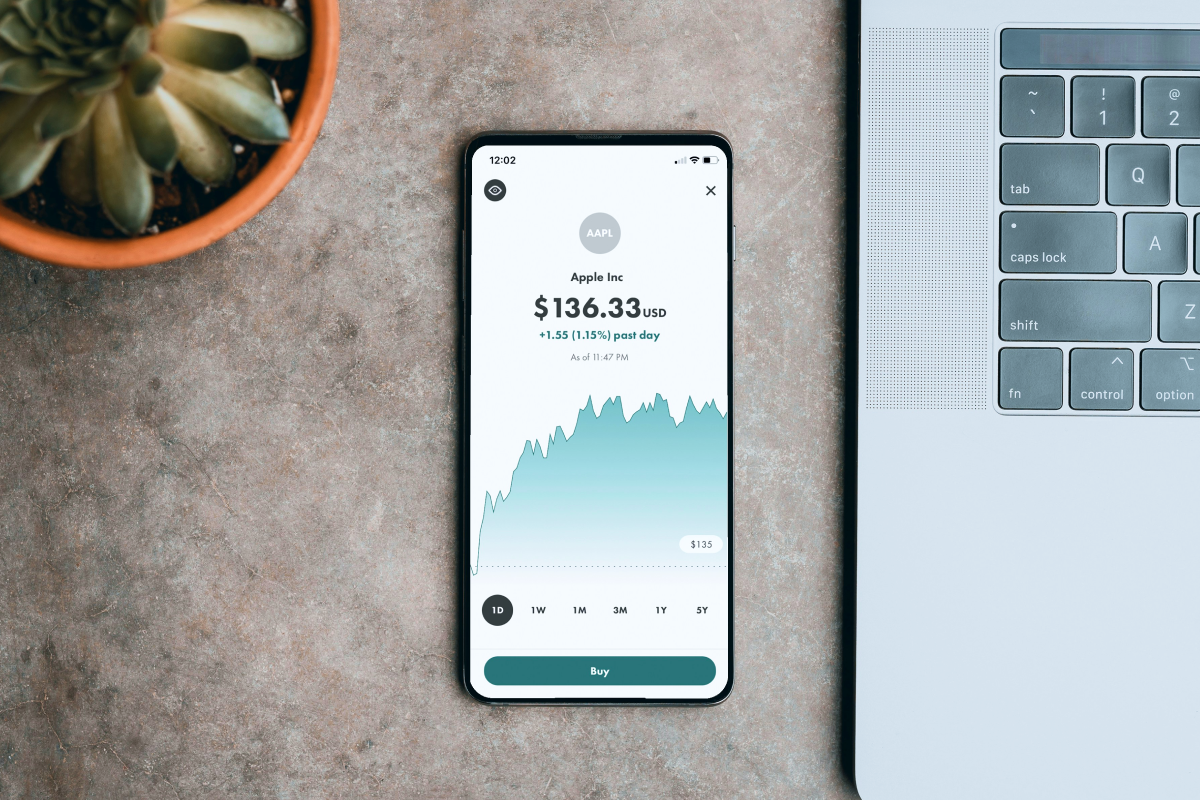Mobile commerce isn’t the next big thing. It is a phenomenon that’s already happening. No matter if your business is B2B, B2C, or P2P, a mobile commerce app is a must for online sales. That’s why it’s important to understand m-commerce in detail, along with its benefits, implications, and ways to approach.
In 2025, m-commerce made up 59% of the total e-commerce sales, which amounts to $2.51 trillion. The figure is expected to hit $3.35 trillion in 2028
Business owners would want to pivot on the unstoppable growth of m-commerce or risk being swallowed by obsolescence. Big brands have found themselves outrivaled by newer companies as they failed to respond to a major shift in retail trends.
This article serves as an introduction to m-commerce software development, how business owners could fuel their growth with it, and the costs associated with it.
What Is M-Commerce?
The term m-commerce, short for mobile commerce (sometimes written as “mcommerce”), refers to the commercial transactions that are performed over a mobile device. It involves the use of devices such as mobile phones and tablets to carry out activities like bill payments, online banking, product sales, service purchases, and other financial transactions.
For businesses, it allows them to reach customers directly on their smartphones, increase engagement, and drive more sales. For customers, it offers convenience, quick checkout, and personalized shopping experiences anytime, anywhere.
M-commerce isn’t exactly a new technology or trend. Instead, it is an extension of e-commerce that has been around for more than a decade. Mobile commerce reflects the natural progression of technology as users are spending more of their time on mobile devices instead of computers. Today, 5.78 billion people use mobile phones. This number equals 70.5% of the world’s population.
Types of mobile commerce
Generally, mobile commerce is classified into these categories:
1. Mobile shopping
Mobile shopping is about enabling shopping experiences on mobile devices. Whether it’s shopping from one of the many Shopify stores or subscribing to Netflix on mobile, that’s m-commerce in action.
2. Mobile banking
Gone are the days when the public needed to queue up at banks or ATMs to make financial transactions. Top banks offer mobile phone banking worldwide, where users can pay bills, transfer money, and perform other transactions with a few clicks.
3. Mobile payments and digital wallets
QR code, NFC, and evolving mobile security have made it possible for users to replace physical cash with mobile payments. Google Pay and Apple Pay lead the charge of digital wallets in Western countries, while apps like AliPay and WeChat dominate mobile payments in China.
4. Mobile ticketing
Mobile ticketing allows users to buy digital tickets for travel, events, or entertainment directly from their phones. It helps businesses cut the costs of paper tickets and gives customers instant access to their purchases in one place.
Characteristic features of mobile commerce
There are several features that define mobile commerce and make it different from traditional online shopping. These characteristics show how m-commerce improves convenience, expands reach, and creates new ways for users to interact with brands.
Browsing and purchasing
Just like e-commerce on desktop, m-commerce allows users to explore products, compare options, and buy through mobile apps or optimized websites. It also includes social commerce, where people shop directly on platforms like Instagram, TikTok, or Snapchat.
Convenience in shopping
M-commerce makes shopping easier for both customers and retail staff. It reduces the need for in-person contact and keeps businesses running even when physical stores stay closed. Customers can buy what they need anytime, from anywhere.
Mobile app and wallet payments
M-commerce offers a variety of payment methods. With digital wallets gaining popularity, users can complete purchases without entering card details every time. A simple tap or fingerprint is enough to confirm a secure transaction.
Digital content access
Mobile commerce covers more than physical goods. Music and video platforms such as Spotify or Netflix give users access to entire content libraries through mobile subscriptions. This model shows how mobile apps can power digital experiences as much as physical retail.

Why M-Commerce Is Growing So Fast
The growth of mobile commerce is directly connected to how users are accessing the internet. As smartphones become accessible and high-speed internet is no longer a premium infrastructure in many countries, users have ditched PCs in favor of the smaller gadgets for internet browsing.
Naturally, brands need to be where the users are, and it means embracing mobile commerce on top of the existing e-commerce platforms. Retailers started launching shopping apps and furnishing them with easy-to-browse catalogues and a hassle-free checkout process.
The fact that consumers are inseparable from their mobile phones doesn’t go unnoticed to bankers and payment providers. Banks started introducing banking apps that allow transactions to be made on the mobile screen.
Global adoption of mobile payments
The emergence of mobile commerce also changes how brick-and-mortar business operates, particularly in adopting cashless payment. Technological giants rushed to the fore with their versions of digital payments.
In the US, Amazon Pay, PayPal, and Apple Pay seem to be the favorites, with Payoneer, Airwallex, Zelle, Venmo, and Dwolla also playing a significant role for freelancers and businesses alike.
In Europe, the top contenders are Apple Pay, Samsung Pay, Google Pay, and PayPal, which compete with providers that are dominant in their respective countries.
The growth of mobile payment in China has been mercurial, with popular payment providers like AliPay, WeChat, LinePAY, and a few other players dominating the scene.
Interesting mobile commerce statistics
It’s important to note that mobile commerce isn’t a fad. Past statistics and predictive projections paint a good picture of how mobile commerce will continue to grow.
According to Statista, mobile phones now dominate global online shopping. In the second quarter of 2025, smartphones accounted for about 77% of all retail website visits and generated 69% of online orders worldwide.
Another Statista insight shows that the share of mobile is growing rapidly, increasing from 43% in 2018 to a projected 63% by 2028.
As of 2024, mobile devices account for 69% of global Black Friday sales and 70% of purchases in the US. This shows how quickly shopping habits have shifted from desktops to smartphones over the past few years.
The likelihood of individuals making purchases on their smartphones is also huge. According to OuterBox, 79% of smartphone users purchased something on mobile in the past 6 months.
With all eyes on smartphones, it isn’t surprising that global mobile ad spending keeps climbing. In the U.S. alone, mobile advertising reached $202.6 billion in 2024, accounting for 66% of total digital ad spend and marking a 14.4% annual growth.
According to Custom Market Insights, the global mobile payment market is set to grow rapidly in the coming years. The market is expected to reach $116.14 billion in 2025 and surge to $1.7 trillion by 2034, showing an impressive average annual growth rate of 34.9%.
Benefits and Restrictions of M-commerce
Like any technology, mobile commerce has its pros and cons. Let’s discuss each of them in more detail.
.png)
M-commerce benefits
And we start from the positive side. M-commerce brings clear advantages for both businesses and customers, from higher sales opportunities to more convenient shopping experiences that fit modern lifestyles.
Wide audience
As mentioned earlier, about 7 in 10 people worldwide own a smartphone. The sheer number of mobile phone users should motivate businesses to embrace m-commerce and start making their products/services available on apps or mobile-optimized web stores.
Enhanced user experience
User experience is a crucial factor that leads to conversion on mobile. Thankfully, various technologies exist to enhance user experience on the mobile device.
IKEA’s augmented-reality-powered shopping app is a textbook example of how to make the most of the mobile platform. It allows users to check how the furniture will look by superimposing it on the actual living space.
Many other brands follow this approach. HOKA, for instance, uses AI and AR features that allow users to virtually try on shoes. The app also includes a convenient shoe finder tool that helps shoppers choose the right model and size, creating a seamless shopping experience.
Customer support availability
With the aid of AI chatbots and messenger apps, business owners can be assured that their customers have access to support within or outside business hours. Customer support bots have grown in intelligence and intuitiveness, making them efficient in dealing with common queries.
Variety of payment methods
Customers are spoiled with options when it comes to payment methods on m-commerce. Whether it’s the conventional debit/credit cards, PayPal, Skrill, or cryptocurrency, they can be integrated into the mobile store.

M-commerce restrictions
Now, let’s look at the other side. Like any technology, m-commerce also has its challenges. Yet with the right development partner, these challenges turn into opportunities for smarter business growth.
Cost of m-commerce app development
Building an m-commerce app requires a considerable investment. It involves the fundamentals of the app, security modules, database, store designs, payment gateway, and other functions, which can be quite costly.
Still, this investment pays off in the long run. A well-built m-commerce app strengthens brand visibility, increases customer loyalty, and keeps your business competitive in a mobile-first world.
Geo-locational preference of payment gateways
It will be overwhelming to provide payment gateways that are popular in every country around the world. This will limit the target audience when the app launches, and expanding to different regions isn’t easy.
However, experienced developers can design a flexible architecture that supports the most popular gateways first and easily adds new ones as your business expands globally.
The Costs of Building an M-Commerce App
The cost of building an m-commerce app depends on many factors, including the number of features and the overall complexity of the product. We base the estimates on the average hourly rate of a Middle developer in Eastern Europe, which gives a realistic view of the budget for most projects. Below, we break down both aspects to give a clearer picture of what influences the final budget.
The costs of M-commerce app development based on features
Each feature, such as a product catalog or payment gateway, requires a specific amount of time and expertise to develop. The table below shows the average time and cost for key components in terms of mobile e-commerce app development.

The numbers show that advanced features increase both time and cost, but they also bring higher value. Costs are approximate and reflect average Eastern European middle developer rates. Higher rates or additional complexity may increase the budget accordingly. Functions such as AI recommendations, AR product previews, or personalized notifications help attract users, improve the shopping experience, and increase conversion rates. An experienced development team can help define priorities and build the app that matches your goals and budget.
The costs of M-commerce app development based on app complexity
As said, m-commerce apps may differ in complexity, which also affects the pricing tag. The more advanced features, pages, and integrations a product includes, the higher the time and cost. Here’s a general comparison.

Simple apps fit startups or small retailers who need to present products and collect customer requests. Medium apps suit growing businesses that want to add payments or integrations. Complex apps often serve large retailers or enterprises that need automation, user management, or advanced analytics. The right approach depends on your business goals, market stage, and growth plans.
How to Approach M-Commerce Development?
There are two ways to go about building an m-commerce store:
1. Use e-commerce builders
The easiest way to set up an m-commerce store is to use builders like Shopify and WooCommerce. These platforms allow business owners to build online stores from scratch with the available tools, themes, and plug-ins.
It’s a DIY approach that’s less costly but lacks the sophistication and customization of a fully tailored app. The features of the store are limited to what’s possible with the builders.
Generally, it’ll take 1-2 months to create a mobile commerce store with this approach. While the basic template can be ready in a day, a real mobile commerce store still requires product setup, integrations, payment configuration, testing, and App Store/Google Play reviews, etc.
2. Build a fully custom m-commerce application
Custom mobile app development allows flexibility in design and functionality. The development makes use of a wider range of languages and technologies such as Ruby and Node.js. Custom mobile commerce apps can be developed as a native app for iOS or Android or approached through cross-platform app development services to save time, reduce costs, and reach both iOS and Android users with a single codebase.
Building a custom mobile commerce app is more expensive and takes 2-5 months for an MVP (Minimum Viable Product) to be ready.
However, unlike website builders, a custom app gives full control over design, scalability, and user experience. It helps a business grow, adapt features to user behavior, and build long-term customer loyalty. This investment pays off over time.
.png)
How Uptech Can Help You With M-Commerce Development
At Uptech, we have first-hand expertise in building m-commerce solutions that help businesses grow. Our dedicated development team has delivered more than 200 products across different industries. We combine strong technical skills with deep product experience. Among our best works are GreenFi (formerly Aspiration), Dollar Shave Club, and Presidio Investors, which show how we turn complex ideas into user-friendly mobile products.
We’re honored to work with GreenFi, a unicorn online financial firm offering retail banking and investment services to the public. Our client offers a financial product app that allows users to deposit, manage, and transact their savings digitally.
It features an Impact Measurement score that allows users to check out how they are positively influencing the community when they’re spending with the app. Aspiration has secured $200 million over 6 rounds of funding.
Another success story is Dollar Shave Club, a US brand that transformed men’s grooming through a subscription-based shopping model. The company turned to Uptech to strengthen its Android app and deliver a more engaging mobile experience.
Our team took over an existing codebase, improved performance, and added new features together with the client’s in-house product team. We built tools that helped users manage subscriptions, adjust delivery schedules, and explore exclusive content and products. We also introduced infrastructure for A/B testing to identify which features increased engagement and conversion rates.
As a result, the Dollar Shave Club app reached a 4.8 rating on Google Play, won the “Best Shopping App” award at the 2017 Webby Awards, and became one of the most popular mobile shopping apps in its category.
We also collaborated with Presidio Investors, a US-based investment firm that helps individuals and businesses manage their portfolios. The client wanted to automate deal analysis and investment data processing. Our task was to eliminate manual work and improve the team’s efficiency.
We developed an AI-powered system that analyzes, structures, and uploads investment data directly into the client’s CRM. The solution processes emails and attachments in multiple formats, extracts key financial information, and generates structured records automatically. As a result, the client reduced manual work by 80% and increased operational capacity, handling up to 100 deals per day.
You can find more success stories on our portfolio page.
Talk to our team to find out how we can help you launch a successful mobile commerce app.









































































.avif)


























